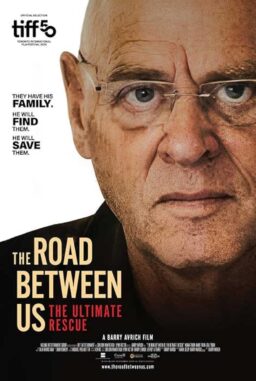Fifty years ago this year, Orson Welles had made what would eventually become known as the greatest movie of all time. But he was having trouble getting it released.
“Citizen Kane” told the story of an aging press tycoon whose arrogance had alienated him from everyone who loved him, and who had died alone inside the vast gothic pile of his lonely castle in Florida. To many observers, Charles Foster Kane bore an uncanny resemblance to William Randolph Hearst, the aging press tycoon who lived in San Simeon, his famous California castle. And to Hearst’s underlings, “Citizen Kane” was so unflattering to their boss that they banned all mention of it from the Hearst papers, radio stations and wire services. For good measure, they also banned all mention of every other movie from the same studio, RKO Radio Pictures.
During one extraordinary moment in the negotiations leading up to the release of “Citizen Kane,” the very existence of the film itself was in doubt. Terrified by the possibility of an antiHollywood campaign by the Hearst press, a group of industry leaders, led by MGM’s Louis B. Mayer, offered RKO a cash settlement to simply destroy the film. It would have covered RKO’s costs and added a small profit. But by then Welles had already sneakpreviewed the movie to so many powerful opinion-makers that it was too late to sweep it under the rug.
“Citizen Kane” never did get a proper national release, however. It could not play in major theaters in many cities, because they were block-booked by the big studios, which boycotted the film. It could not be advertised in the influential Hearst papers (the ads referred only to a mysterious “New Screen Attraction”). And although the film was instantly hailed by many critics, John O’Hara in Newsweek and Bosley Crowther in the New York Times among them, it won only one Academy Award – which Welles shared with Herman J. Mankiewicz, for the screenplay.
The legends of “Citizen Kane” and Orson Welles were, in the next half-century, to become one of the central myths of Hollywood: how a boy genius in his mid-20s was given a completely free rein to make exactly the movie he wanted to make, and how in response he made the greatest movie of all time, only to see both the film and his own career chewed up and spat out by the venal, small-minded Hollywood establishment. Welles became the great outsider hero of cinema, central to the French auteur critics, championed by independent filmmakers, cited by anyone who wants to make an argument for film art over film commerce.
And now it is 1991 and Welles is dead and so are many of the other bright-eyed young people in his Mercury Theater troupe who went West to make a movie. But the legend of “Citizen Kane” lives on. It is routinely voted the greatest film of all time, most notably in the international polls by the British film magazine Sight & Sound in 1962, 1972 and 1982. And this spring a bright, sparkling new restored print of “Citizen Kane” will play in 50th anniversary engagements all over the country.
There is a certain irony in the national release of this revival, since “Citizen Kane” is now owned by Ted Turner, an international media baron with certain similarities to both Hearst and Kane. All three men came from humble origins, got their first broken-down media property cheap, had a vision of a new mass audience and became famous millionaires who settled down with actresses.
Turner says he has the time to watch only three or four movies a year, but I’ll bet “Citizen Kane” is among them. And perhaps he notices parallels with his own career: how his undoubted achievements and great successes are sometimes undermined by a failure of taste. Kane’s great downfall came because he fell in love with a humble shopgirl and became determined to turn her into a great opera singer, despite her lack of talent. The Achilles’ heel in Turner’s career came when he fell in love with a sleazy technical innovation named colorization, and became determined to turn black and white movies into ersatz color movies, despite the outraged protests of film lovers everywhere. Yes, the Ted Turner who has made the beautiful, lovingly restored new print of “Citizen Kane” is the very same man who also wanted to colorize Welles’ masterpiece.
“Make me one promise,” Welles told his friend Henry Jaglom a few weeks before his death. “Keep Ted Turner and his goddamned Crayolas away from my movie.” In the event, it was a document 50 years old that kept Turner’s crayons away from “Kane.” Welles’ original contract with RKO, hailed at the time as the most extraordinary contract any studio had ever given a filmmaker, guaranteed Welles’ absolute control over every aspect of the production – including its color, or lack of same.
And so the new print now going into release around the country will look substantially the same as when the movie had its premiere in 1941. For many filmgoers, that will be a revelation. More than most films, “Citizen Kane” must be seen in a 35mm theatrical print to be appreciated.
I’ve seen “Kane” at least 50 times on 16mm, videotape and laserdisc. I have gone through it a scene at a time, using a stop-frame film analyzer, at least 25 times in various film classes and at festivals. Yet I’ve seen it in 35mm only twice: in 1956, when it had its first major re-release and I was in grade school, and in 1978, when a new print was shown at the Chicago Film Festival.
From my 1956 viewing, I remember only the overwhelming total impression of the film, which in its visual sweep and the sheer audacity of its imagination outclassed all the small-minded entertainments I was used to seeing at the movies. From the 1978 viewing, I remember how the brightness and detail of the 35mm print opened up the corners and revealed the shadows of the great film.
“Citizen Kane” makes great use of darkness and shadow. Welles, working with the gifted cinematographer Gregg Toland, wanted to show a man’s life that was filled to bursting with possessions, power, associates, wealth and mystery. He created a gloomy, dark visual style for the picture, which in 35mm reveals every nook and cranny to contain a treasure or a hint. And because of Toland’s famous deep-focus photography, the frame is filled from front to back as well as from left to right.
The first apartment of Kane’s mistress, for example, contains the paperweight he drops much later when he dies. It’s on a table with other odds and ends. The famous warehouse shot at the end of the film includes a portrait of young Charlie Kane with his parents. You can see those details easily in 35mm, but not so easily in the 16mm prints of the movie, or even in the superb laserdisc issued by the Criterion Collection. If you’ve only seen the movie on broadcast television or in a beaten-up 16mm classroom print, you may be amazed at the additional details visible in 35mm.
The story of the making of “Citizen Kane” is by now one of the central legends of movie lore. Many books have been written about the film, most notably The Citizen Kane Book by Pauline Kael, with her famous essay “Raising Kane,” which argues that the contribution of writer Herman J. Mankiewicz to the production has been underappreciated. Robert Carringer, a Welles expert at the University of Illinois, has published The Making of “Citizen Kane,” with much analysis of visual strategies and production details. And Harlan Lebo’s new “Citizen Kane“: The 50th Anniversary Album includes many inside details from interviews with the participants. (Example: Welles gashed his left hand in the scene where he tears apart Susan’s apartment, and pulls it out of camera view in the closeup where he picks up the paperweight.)
Two weeks ago at the University of Colorado, I went through “Citizen Kane” once again, with a 16mm film analyzer, joined by several hundred students, faculty and townspeople. We sat in the dark, and audience members called out “stop!” when there was something they wanted to discuss. Scene by scene and sometimes shot by shot, we looked at the performances, the photography, the special effects.
In preparing for this 50th anniversary salute to “Kane,” I re-read all of the books. There is much disagreement about many of the facts. You can read that Hearst personally saw “Citizen Kane,” or that he did not. That Hearst, if he did see the film, was offended by it, or actually rather enjoyed it. That Welles took credit for the work of his associates, or that he inspired them to surpass all their earlier achievements.
Reading the many accounts of “Citizen Kane” is a little like seeing the movie: The witnesses all have opinions, but often they disagree, and sometimes they simply throw up their hands in exasperation. And the movie stands there before them, a towering achievement that cannot be explained yet cannot be ignored. Fifty years later, it is as fresh, as provoking, as entertaining, as funny, as sad, as brilliant as it ever was. Many agree it is the greatest film of all time. Those who differ cannot seem to agree on their candidate.











